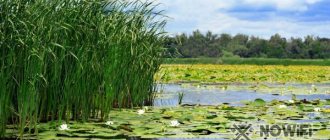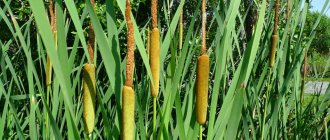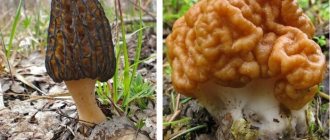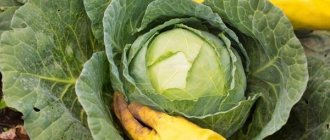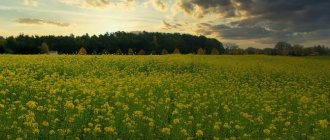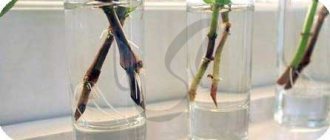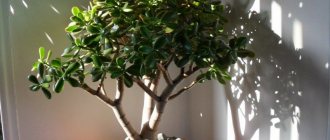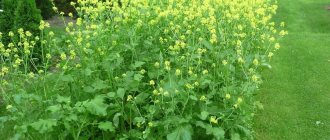Nature lovers often watch near bodies of water how reeds sway and sway near the shore. The sound of this plant resembles a quiet rustling sound at night. The fluffy tops seem to look into the surface of the lake as if into a mirror. Many village children use them for their fun. And today we will talk about a plant called reed. You will learn about plant types, properties, applications, interesting facts about it. Photos of the reed plant will clearly demonstrate to you its main features.
Description of the plant
Almost everyone knows what reeds are. Reed belongs to the perennial and annual coastal-aquatic plants of the sedge family. There are 300 species of this plant. It grows throughout the planet, but is most often found in temperate and subtropical zones. On the territory of the Russian Federation you can find 20 of its species.
For those who do not know what reed is, we remind you that it is a perennial, or less often annual, plant with a creeping or shortened rhizome. It is distinguished by cylindrical or triangular leafy stems. The foliage is often scale-like. Inflorescences may consist of one, several or many capitate or paniculate spikelets. The flowers themselves are bisexual.
The word "reed" has a colloquial form - "cattail". The most common reed has triangular, rigid stems with planted, linear, folded leaves reminiscent of sedge. It has spreading and umbrella-shaped inflorescences. In the damp places of the middle zone there is a lot of the most common forest reeds. You will find a description of the plant later in the article.
We will tell you about the six main types of this plant. You don't know what reeds are? Fans of ponds can easily imagine it immediately. Many people confuse it with broadleaf cattail, but it is a completely different plant from the sedge family.
How is it different from cattail?
Rogoz
Reed
The first plant is known to everyone thanks to its velvety brown candles or “horns”, while the second is a less noticeable tall grass.
The difference between cattail and reed is obvious. It is enough to see both plants once, and there will be no more difficulties in distinguishing them.
So, cattail has a tall, large stem with a tight brown ear on top. It contains seeds, and as they ripen, the cob collapses, losing its density. Then the fluffs and seeds fly out of it, leaving a bare stem.
The reed stem is triangular or round in cross section; on its crown there are inflorescences in the form of umbrellas, tassels or small heads.
If you look at the pictures of what reeds and cattails look like, the first thing that catches your eye is the difference in the inflorescences, but this is not the only difference:
- Long ribbons , partially submerged in water and stretching from the rhizome itself, belong to cattails - even if they are picked and dried, they will not lose their elasticity for a long time. The width of the leaves directly depends on the species.
- In reed plants, the structure of the leaf also depends on the variety - in lake plants only bare stems are visible, which are covered with scales closer to their roots, while in forest plants they are similar to sedge plants.
- Cattail prefers to grow in bodies of water with slow currents. It is also found in wetlands and stagnant shallow waters.
The external difference between cattail and reed is very significant, but the latter is often confused with swamp reed, which is also completely wrong.
A distinctive feature of the reed is a massive soft panicle at the end. The reed inflorescences are hard and prickly, while the cattail inflorescences scatter with seeds and soft fluff, after which they sprout at the bottom of the reservoir.
Despite all the differences, cattail and reed are considered very valuable plants:
- Their roots provide nutritious food for many animals, including livestock.
- Flour can also be obtained from reed rhizomes.
- On the farm, both representatives of aquatic flora serve as excellent materials for making wickerwork.
Places of growth
The habitat of reeds is Europe, Asia, the Caucasus, the Middle and Far East, Hindustan, and North Africa. It is especially abundant in the Columbia River Basin. His favorite places are banks, river deltas, swamps, ditches. The Japanese even learned to cultivate it to use it for weaving.
Neutral and slightly acidic moist soil is most suitable for planting reeds. It likes shallow water and full sun. Some species can grow in the shade.
lake view
Often the shores of lakes, rivers, and oxbow lakes in the temperate zones of Siberia, Europe, North America, and the Caucasus are decorated with lake reeds. The lake species is a perennial plant with a height of 1 to 2.5 m. It has a creeping hollow rhizome. Characterized by cylindrical stems and scale-like leaves. The inflorescences have a corymbose-paniculate shape. The size of the spikelets is 8-12 mm in length. They are brown in color. There may be 1-2 leaves near the flowers. Flowering occurs at the end of spring, beginning of summer.
The plant is often used to decorate ponds. Its variegated form is used for design. The lake species is distinguished by pale yellow stems up to 1.5 m high.
Bristle plant
After our description, you will have a better understanding of what reeds are. Another type of it is thyroid. He loves damp sandy places and the banks of ponds. Its growth zone is Europe, the Caucasus, southwest Siberia, Central and Western Asia, and India.
Bristle reed is an annual plant reaching a height of only 20 cm. It is characterized by numerous thin narrow leaves. The stems may contain from 1 to 4 small panicles, collected at the top of the stem. Near the flower there is one leaf, which is higher than the inflorescence itself. The spikelets have a dark purple hue. This species blooms at the end of May.
Forest reeds
Although this species is called forest, it is the least likely to be found in forests. He loves swamps, overgrown lakes, ponds, marshy river banks, and reservoirs. Forest reeds also prefer damp meadows and lowlands with standing water. This species has a creeping rhizome and can reach about a meter in height. The top of the stem looks like a lush panicle. The stem has a triangular shape and is covered with long leaves, which have a rough texture at the edges. Flowering of forest reeds begins at the end of June. The plant forms extensive thickets over time.
Reed
Reed: description The genus Reed (Scirpus) contains about 300 species of perennial, rarely annual, grasses of the sedge family (Cyperaceae). Reeds are distributed throughout the globe, but most species live in the tropics and subtropics, in ponds or swamps; some species float on the surface of the water. On the territory of Russia you can find 20 species of reeds. The underground part is most often represented by a rhizome - creeping or shortened. The above-ground part reaches 2-3 m in height, but there are also miniature species (20-30 cm). The shape of the stems is almost cylindrical or triangular. The latter are usually covered with linear leaves, reminiscent of sedge leaves. The cylindrical stems are usually smooth and thick, devoid of leaves, but have scales up to 3 m long at the base. In some species, the leaves are thread-like, forming a basal rosette.
Reeds are often mistakenly called cattails . In the reed, at the top of the stem in mid-summer, inflorescences-spikelets appear, collected in an umbrella, head or panicle up to 10 cm long, or less often a single spike. The spikelets consist of several bisexual flowers, colored light green, turning brown towards the end of flowering. Some species have a bract leaf arranged in such a way that it appears to be a continuation of the stem. In others, it is thin, awl-shaped, and resembles a film. The fruit is a nut, flat-convex or triangular in shape.
Planting reeds Reeds are unpretentious to growing conditions, but grow and develop better in a sunny place. Forest reeds and rooting reeds tolerate slight shading . The soil is neutral or slightly acidic (pH 5.0-7.0), moist. Reeds can be planted on a swampy bank or directly into a body of water. Species with leafy stems ( forest reed, rooting reed ) are buried no more than 20 cm in water; species practically devoid of leaves ( lacustrine reed, Tabernemontana reed ) can be immersed to a depth of up to a meter. Miniature species are used to decorate the shore. Drooping reed , grown indoors, needs a lighted place without access to direct sunlight. In a bright place, it forms a bunch of ascending stems and leaves, and with a lack of light, the bush becomes spreading. The optimal soil for planting is a mixture of turf, leaf or humus soil and sand (2:1:1). Grows successfully in hydroponics. The container needs to be wide and shallow. Growing reeds Reeds are undemanding in terms of maintenance. Care involves controlling the growth of the plant. If necessary, it is limited to planting in containers. In late autumn, the above-ground part of the reeds is cut off. Forest reeds, rooting reeds, lake reeds, Tabernemontana reeds, bristle reeds are winter-hardy without shelter in central Russia. Pointed reed and sea reed are grown in open ground only in the south of Russia. The varieties are less resistant, so it is recommended to grow decorative forms of even winter-hardy species in containers and put them away in a frost-free room for the winter. Drooping reed prefers a summer temperature no higher than +20°, and a winter temperature no lower than +8°. In the warm season, it is possible to take the plants out into the fresh air - onto the terrace or into the garden. Drooping reeds are moisture-loving; in summer, abundant watering is required; it is advisable that there is a 4-5 cm layer of water in the pan. In winter, when the temperature drops, watering is reduced, but the top layer of soil should always be moist. The plant does not have a clearly defined dormant period; when kept indoors, the reed is forced to “rest” due to low light. From May to September, during the period of active growth, it is advisable to fertilize with complex mineral fertilizer (without calcium) once every 10-14 days. The air humidity around the plant is increased by daily spraying and placing the pot on a tray with wet expanded clay. Drooping reeds are transplanted annually in the spring, since the plant tends to quickly lose its decorative properties. To stimulate the growth of new shoots, overgrown roots and old wilted leaves are cut off with pruning shears, and large bushes are divided. Reed: application Reed is used to design ponds, shallow waters, and wet areas in natural-style gardens. The water lily, water lily, susak, and marigold will be excellent companions for reeds. Sea reed is resistant to soil salinity, so it can be successfully used in areas with similar soil conditions. Reeds have the ability to purify water. Reed inflorescences are used to make winter bouquets. Soft reed stems have long been used for weaving baskets, mats, and are even used as roofing material. Due to the high starch content in the rhizomes, in ancient times they were used to make flour. Drooping reed is used in closed ground as a hanging plant, in open ground - for summer decoration of small artificial reservoirs. Reed propagation Reeds are propagated vegetatively or by seeds, however, with the latter method, varietal characteristics are lost. The bushes are divided in April-May or September. Drooping reeds are divided in the spring when transplanting. The bush is dug up, washed, and then divided into several parts with a sharp knife or pruning shears, each of which should have 1-2 buds and developed roots. The delenki are immediately planted in a permanent place. For large plants, the distance between divisions is 40-50 cm, for miniature ones - 20-30 cm. Seed propagation is more difficult. After 2 months of wet stratification at low positive temperatures, in February-March the seeds are distributed over the surface of moist soil (a mixture of peat, humus and sand in equal parts). To maintain air and soil humidity, the container with the crops is covered with glass and placed on a tray with water. Keep at a temperature of +17…+20°C. Shoots appear quickly, within 5-7 days. After 1-2 months they are picked, and in June the young plants are planted in a permanent place. Drooping reed seeds do not need stratification. Reeds often reproduce by self-sowing. Pests and diseases Reeds grown in open ground are not susceptible to attack by pests and are resistant to diseases. Drooping reeds lose their decorative properties and are affected by spider mites and aphids when grown in unfavorable conditions: low air humidity, poor or excessive watering, cold conditions and drafts. In the shade, the plant fades and stretches, and direct sunlight burns the leaves, causing the latter to become faded. Reed reacts negatively to chemicals, so it is especially important to create favorable conditions for the growth and development of the plant, as well as periodically inspect it for the presence of pests. Types of reeds with triangular stems Forest reed (Scirpus sylvaticus). The stem is about a meter high and covered with alternate linear leaves with a rough edge. In June-July it is crowned with a dense panicle of numerous spikelets, each up to 5 mm long. Spikelets are collected in 2-5 pieces at the ends of the inflorescence branches. The perianth is formed by six stamens. The fruit, a triangular nut, ripens in July-August. The underground part is represented by a horizontal rhizome 2-4 mm thick. Rooting reed (Scirpus radicans), unlike the previous one, in addition to flowering shoots, also has vegetative shoots, which, bending arcuately towards the ground, take root at the tops. The spikelets are collected in a paniculate inflorescence, but at the ends they are not collected in bunches, but solitary. The leaf shape is narrower than that of forest reed. Both the leaves and stems are reddish in early spring; by summer they turn green. Pointed reed (Scirpus mucronatus) forms a dense cluster of leaves and stems up to 70 cm in height and up to 8 mm in diameter. The spikelets are light brown, oblong, 1-2 cm in length, collected in a dense capitate inflorescence of 3-25 pieces. The bract leaf, up to 10 cm long, has a triangular shape and is colored light green. Blooms in June-July, bears fruit in July-August. Sea reed (Scirpus maritimus). The stems reach 50-100 cm in height, covered with alternate linear, up to 1 cm wide, leaves distributed evenly along the entire length of the stem or concentrated in its lower part. The rhizome produces spherical tubers about 3.5 cm in diameter. Light, less often dark brown spikelets up to 2 cm long and up to 1 cm thick are collected in a capitate inflorescence. Sometimes there is another one above the main inflorescence, with fewer spikelets. The perianth is most often absent. Blooms in June-July, bears fruit in July-August. Types of reeds with cylindrical stems Lake reed , or kuga (Scirpus lacustris, Shoenoplectus lacustris) is a large plant. The powerful stem reaches 3 m in height, the root system is represented by a hollow shortened rhizome. The corymbose-paniculate inflorescence is formed by brown spikelets about 1 cm long, collected in groups of 3-4 (rarely pieces at the ends of the peduncles. Bracts are subulate-shaped, slightly longer than the inflorescence, usually in the amount of 1-2. Blooms in May. There are forms with decorative coloring of leaves and stems: with yellow vertical stripes, bright yellow horizontal, solid yellow leaves in spring and lush green in summer.Tabernaemontana reed (Scirpus tabernaemontani) is distinguished by its smaller size (up to 1.5 m), bluish color of the stem, reddish color of spikelet scales and numerous with purple warts on them. A popular variety with white horizontal stripes on the stems. Miniature types of reeds Bristle reeds (Scirpus setaceus) - unlike the species named above, this is an annual. Very narrow, thread-like leaves and numerous thin stems are collected in a bunch up to 20 cm in height The inflorescence is a bunch of 1-4 small spikelets, the scales of which are dark purple with a green stripe.A single bract leaf is much longer than the inflorescence, it seems to be a continuation of the stem. Blooms in May-June. Drooping reed (Scirpus cernuus, Isolepis gracilis) is grown as a houseplant. More often it is called isolepis graceful , or cuckoo tears . This is a perennial rhizomatous plant, whose thin leaves and stems are collected in a spreading bunch, resembling a fountain, up to 20-30 cm in height. In mid-summer, small single spikelets of milky color appear at the ends of the stems.
The powerful stem reaches 3 m in height, the root system is represented by a hollow shortened rhizome. The corymbose-paniculate inflorescence is formed by brown spikelets about 1 cm long, collected in groups of 3-4 (rarely pieces at the ends of the peduncles. Bracts are subulate-shaped, slightly longer than the inflorescence, usually in the amount of 1-2. Blooms in May. There are forms with decorative coloring of leaves and stems: with yellow vertical stripes, bright yellow horizontal, solid yellow leaves in spring and lush green in summer.Tabernaemontana reed (Scirpus tabernaemontani) is distinguished by its smaller size (up to 1.5 m), bluish color of the stem, reddish color of spikelet scales and numerous with purple warts on them. A popular variety with white horizontal stripes on the stems. Miniature types of reeds Bristle reeds (Scirpus setaceus) - unlike the species named above, this is an annual. Very narrow, thread-like leaves and numerous thin stems are collected in a bunch up to 20 cm in height The inflorescence is a bunch of 1-4 small spikelets, the scales of which are dark purple with a green stripe.A single bract leaf is much longer than the inflorescence, it seems to be a continuation of the stem. Blooms in May-June. Drooping reed (Scirpus cernuus, Isolepis gracilis) is grown as a houseplant. More often it is called isolepis graceful , or cuckoo tears . This is a perennial rhizomatous plant, whose thin leaves and stems are collected in a spreading bunch, resembling a fountain, up to 20-30 cm in height. In mid-summer, small single spikelets of milky color appear at the ends of the stems.
CARE RECOMMENDATIONS
Reed is undemanding in terms of maintenance. Care involves controlling the growth of the plant. If necessary, it is limited by planting in containers.
sea view
A closely related species is the sea reed. It is also classified as a new separate genus. Its peculiarity is that it is adapted to saline soil and water. It has a creeping rhizome, stems up to 1 m and leaves 3-6 cm wide. The apex of the marine species is similar to a star-shaped, umbrella-shaped inflorescence of brown color.
The stems have a triangular shape. Its difference from other species is in the underground shoots thickened at the ends, reminiscent of small tubers. They are suitable for food because they contain a lot of starch. The tubers are boiled or eaten raw.
Kinds
Ozerny
(Scirpus lacustris, Shoenoplectus lacustris) is a perennial herbaceous plant from the sedge family. It is easy to distinguish from reeds and cattails.
If the cattail has long leaves and dark brown ears at the tops, consisting of compressed fluffs, and the reed has narrower and longer leaves, as well as a panicle of flowers at the end of a long stem, then the reed stands in the water in the form of a tall (up to 1-2 m) a round twig without panicles and cobs.
Only at the end of July a small cluster of spiny brown spikelets appears at the top of the smooth stem.
Reeds are used as fuel, for livestock feed, for the manufacture of roofs, mats, carpets, paper, for the production of alcohol, tannins, lactic acid and glycerin.
Nautical
(Scirpus maritimus) - Perennial with creeping rhizomes, stems 50-100 cm high and linear leaves 3-8 mm wide. At the top of the shoot there is a dense, star-shaped, umbrella-shaped inflorescence of brown color. Can be used for landscaping areas with saline soil.
Bristly
(Scirpus setaceus) - In damp sandy places, mostly along the banks of reservoirs in the warm-temperate and subtropical zones of Europe, the Caucasus, southwestern Siberia, Central and Western Asia to India.
Annual plants 3-20 cm tall. The stems are numerous, thin, with very narrow leaves. Spikelets number 1-4, small, collected in a bunch at the top of the stem.
The bract is one, longer than the inflorescence. Covering scales are dark purple, with a wide green stripe. Blooms in late spring.
Forest
(Scirpus sylvaticus) - Despite the name, forest reed is the least commonly found in the forest. But in swamps, on overgrown lakes, ponds, on the muddy banks of rivers and reservoirs, this is the most common plant. You can also find isolated clumps of reeds in damp meadows - in depressions where water stagnates for a long time.
A perennial plant about a meter high with a creeping rhizome. At the top of the stem there is a lush panicle of small greenish spikelets.
The stem is triangular, from the base to the inflorescence itself, covered with alternate leaves. The leaves of the forest reed are long, linear, and rough along the edges. Blooms in June-July.
Tabernemontana
(Scirpus tabernaemontani) - Similar to S. lacustris; It is distinguished by reddish-brown covering scales of spikelets, covered with numerous purple small warts.
In water (especially saline) and along the banks of lakes and rivers, in oxbow lakes from the Mediterranean region to the cold-temperate zone of Eurasia.
The species is named after the 16th century German botanist. D. Müller (J. T. MSH-1er), who wrote under the pseudonym “Tabernaemontanus”. The culture commonly used is S. tabernaemontani var. zebrina hort. (S. zebrinus hort.) with yellowish-white stripes on the stem.
taking root
(Scirpus radicans) - In early spring, the leaves and stem of this species are brownish-reddish in color, later turning green.
The barren stems of this reed look unusual and attractive; they lengthen and, bending in an arc, touch the water, where they form a new plant.
Rooting species
The peculiarity of this species is that in spring it turns brown-red. In summer the leaves turn green. It has very unusual sterile stems. They are long and beautifully curved. These bends cause the plant to touch the water and a new bush begins to sprout. There are many other types of reeds. Among them are pointed, bristly, and decorative.
Plant propagation and care
In nature, reed reproduction occurs through seeds. It also very often comes out by dividing the rhizome. To propagate a certain plant variety, bush division is used. Transplantation is carried out in early May or September.
Reed does not require special care. It grows strongly, and its long rhizomes self-sow. It takes on a rooted appearance very quickly. In a month or two it produces many new stems.
Planting and transplanting
It is usually planted on a swampy bank or directly into the reservoir itself. Types of reeds with stems covered with leaves are immersed in water by twenty centimeters when planting, and reeds with bare stems - by a meter.
Decorative species are used for coastal landscaping. When planting reeds at home, you should choose a shallow, wide container.
Reeds are characterized by rapid aging and shedding of leaves. For this reason, the plant requires replanting every spring.
During transplantation, the reeds are separated and yellowed leaves are removed.
Important! You should not divide the reeds into too many parts, since weak roots on small bushes may not take root.
Use of reeds, interesting facts
This plant is used to decorate gardens in a natural style. It complements the plant compositions of shallow waters. Reeds are an excellent backdrop for spectacular water lilies, egg capsules and other plants that float on the water surface. Shady gardens are also decorated with certain types of reeds. It often forms an impenetrable wall of stems, resembling a two-meter hedge. Pollen from inflorescences is transferred from one plant to another by the wind. It is very useful for reservoirs, because it prevents water pollution.
Reed is good because it is used to weave shopping bags, baskets, mats, and rugs. They decorate wickerwork made from wicker. The leaves are used the most. For green products they are cut in July, and for yellow ones - in September. To keep them elastic, dry them in the shade. Sometimes used as fuel. In the 20th century, it was used to make reed concrete for rural construction.
The plant was used not only by Russians, but also by other peoples. The British used it to insulate castles and huts. It made the air dry. Reed thickets were a favorite place for hunters, because wild birds loved to hide there.
Reeds were also popular among the Egyptians. The Old Testament says that the prophet Moses was found in a reed wicker basket. And in many myths, babies were saved in just such a wicker basket. The Romans sent the children Romulus and Remus (the founders of Rome) across the water in a similar container made of reeds. One of the hymns to the god of death Yama mentions a reed flute.
In Central Asia, the plant was added to make gypsum. It was excellent for the construction of building floors in seismically hazardous areas. In Russia it was used as thermal insulation. In pre-revolutionary times, special reed slabs were made and installed in the walls of railway cars.
Reed in cooking
Flour is obtained from the dried rhizomes of the swamp reed plant in the regions of Siberia; it is added to cereal flour and flat cakes are baked. However, a large amount of such flour with prolonged use can cause pain, abdominal pain, and flatulence.
The bases of the white stems are eaten raw or dried and ground into flour and baked into flat cakes and bread.
Since the roots are very sugary, they are boiled and sweets are prepared from the syrup.
Reed flour
The reed rhizomes are washed, dried in a dryer and ground into flour. Used as an additive to wheat flour for baking or for baking flat cakes from reed flour alone, adding egg, soda and yogurt.
Rhizome syrup
The rhizomes are washed, peeled, finely chopped and filled with water in a ratio of 1 liter per 1 kg of rhizomes. Boil for an hour. The resulting broth is filtered and evaporated until the syrup becomes thick. Used as a food sweet.
Pickled stems
The bases of the reed stems are washed, cut into small strips and, after blanching for a minute in salted water, placed in a prepared glass container. Pour boiling marinade (as for cucumbers), cover with a lid and sterilize (0.5 l - 20 min). Seal and store in a cool place.
Healing properties of forest species
Forest reeds are used quite widely in folk medicine. Healers use its pollen, stems, leaves, and rhizomes. It is believed that it restores blood well and heals wounds. Even its fluff is used for these purposes. It is used to make an ointment with the addition of oil and lubricate burns. Diabetes mellitus, gastritis, enteritis, dysentery, diarrhea, heavy menstrual flow with pain, insomnia are treated with the leaves of the plant.
Reed is an excellent diuretic and diaphoretic, normalizing kidney function, reducing swelling, and maintaining blood sugar levels. A decoction of the rhizome treats colitis and improves immunity. Tea is made from reed inflorescences, which reduces heart pain and shortness of breath. It is worth recalling once again that it contains a lot of starch and ascorbic acid.
